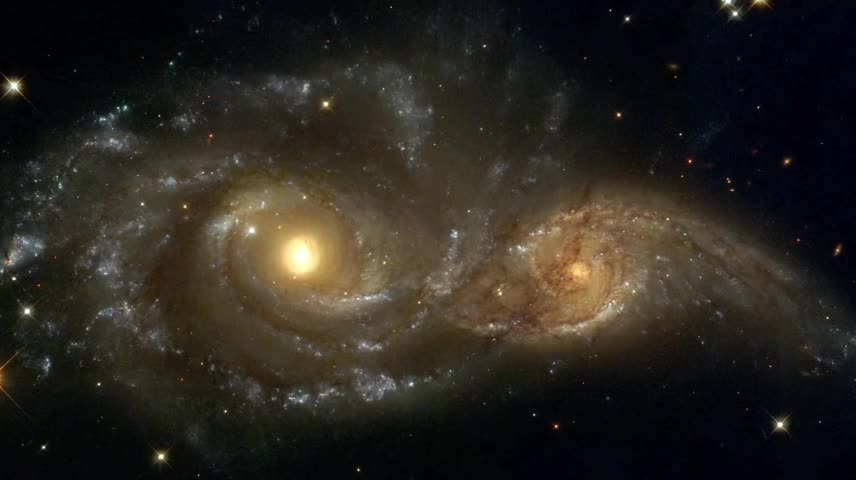Premium Only Content

Milky Way Will Collide With Andromeda Sooner Than Expected
The first thing to point out is that in 2012, astronomers analyzed the motion of the Andromeda galaxy observed by the Hubble Space Telescope from 2010 to 2012,
officially confirming that the two galaxies are bound to collide. Based on Andromeda's lateral velocity, it is estimated that the two galaxies will meet in about 3.75 billion years.
How valuable is NASA's information this time? The first thing to be sure is that the halo is just a huge, though relatively thin, cloud of gas wrapped around the galaxy's periphery,
which can extend to great distances. The Milky Way also has a huge halo, and if you look at the fusion between the halos, the two galaxies have already collided. So the halo collision does not represent a collision between two galaxies,
and the data suggest that the actual collision will take place 3 billion years from now.
Andromeda galaxy colliding with the Milky Way Galaxy is a foregone conclusion in the future, so what will happen to Earth?
First of all, it's not a disaster movie, it's not that scary, this kind of galaxy collision is fairly common in the universe. In fact,
such interstellar collisions do not involve physical contact between the stars and other objects contained in the galaxy.
In other words, galaxies themselves are very diffuse-proxima Centauri, the nearest star to the Sun, is about 30 million times the diameter of the Sun.
That is, after the Andromeda galaxy collides and the Milky Way even merges in 3 billion years, the best we can see from Earth is Andromeda's stars.
-
 1:23:11
1:23:11
Kim Iversen
3 hours agoDennis Kucinich Exposes 9/11 Israel's Lies
55.5K45 -
 1:12:15
1:12:15
Candace Show Podcast
2 hours agoWho Ordered The Hit On Charlie Kirk? | Candace Ep 237
56.5K162 -
 LIVE
LIVE
SpartakusLIVE
1 hour agoTower DOMINATION, Specialist, and INFINITE Dubs || Duos w/ Twitty , Quads Later w/ The Boys
130 watching -
 31:19
31:19
Rethinking the Dollar
7 hours agoMartin Armstrong Predicts 2032 Collapse — Are You Ready? (w/ Kerry Lutz)
6.46K5 -
 DVR
DVR
Redacted News
3 hours agoThey're LYING about Charlie Kirk's murder and they know it, new details just emerged | Redacted
189K151 -
 LIVE
LIVE
Dr Disrespect
7 hours ago🔴LIVE - DR DISRESPECT - ARENA BREAKOUT: INFINITE - ESCAPE OR LOSE EVERYTHING!
1,087 watching -
 LIVE
LIVE
LFA TV
12 hours agoLFA TV ALL DAY STREAM - WEDNESDAY 9/17/25
1,090 watching -
 38:45
38:45
ArturRehi
6 hours agoZapad 2025 — War Games with No Reserves | Ukraine Update
17.3K5 -
 1:10:31
1:10:31
vivafrei
4 hours agoKash Patel int eh Hot Seat! Kirk Assassin Discord Messages Leaked! Ostrich Farm Under Surveillance?
171K68 -
 1:46:45
1:46:45
The Quartering
5 hours agoCharlie Kirk Revenge! 100s of Woke Teachers Fired, Twitch CEO Called To Testify Over Hasan Pike!
176K40